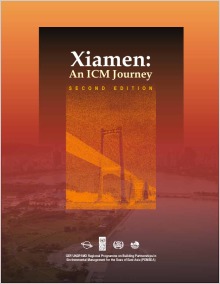
Breadcrumb
Manila Bay Area Environmental Atlas
The Manila Bay Area Environmental Atlas provides a relevant source of information necessary in policy formulation, planning, decision-making, monitoring and integrated river basin and coastal area management. The Atlas describes physical, biological and socioeconomic characteristics of the Manila Bay Area (MBA), provides evidence of the valuable contribution of the habitats and resources to the people and economy of the area, delineates the various environmental issues in and around the bay, and reviews the actions that have been implemented to overcome challenges to sustainable development and management of the MBA. The Atlas is a compilation of data presented in thematic and composite maps, graphs and tables describing the characteristics and status or condition of the MBA. Each map is usually accompanied by a textual description of related findings, socioeconomic significance, risks and challenges that affect the MBA. Photographs are included in the document for better understanding of the places and features of the area.
The Bataan Sustainable Development Strategy
The Bataan Sustainable Development Strategy constitutes broad statements of activities for long term (20 years) implementation of Bataan Integrated Coastal Management Program. This would serve as a comprehensive environmental management framework that would provide directions in achieving targeted outcomes and formulating a series of specific action plans and programs involving the participation of both government and non-government sectors. The Bataan Sustainable Development Strategy (BSDS) embodies the VISION and MISSION of the people of Bataan to chart a course for the preservation of Bataan's rich natural endowments. It is an optimistic statement by and for the people of Bataan to whom the province's natural resources, particularly the coastal environment, provide a source of livelihood, transportation, recreation, a sense of beauty, culture, and history. The sustainable development strategy is a document covering the environmental, economic, and social aspect of Bataan's natural endowments to which Bataeños ascribe different values and threats – real or perceived – that impair those values. It is not easy to turn this knowledge and concern into concrete actions. It would take combined efforts of the local government – from provincial level to municipal and barangay levels – and the various sectors comprising the civil society, to work hand in hand in realizing this vision and mission. This would involve the changing of people’s behavior and attitude, which is not a small task. The BSDS takes on this challenge by tasking every level of society with the responsibility of managing our God-given natural resources from our forest, rivers, and overall coastal environment. Dependence on a common resource will make it possible for us, stakeholders, to start realizing a common vision towards a sustainable natural resources management.
Manila Bay Oil Spill Contingency Plan
The Manila Bay Oil Spill Contingency Plan aims to outline the multi-sectoral arrangement for responding to oil spills in Manila Bay, with the end in view of protecting the Bay from oil pollution or, where this is not possible, to minimize it effects. It also aspires to ensure a timely, measured and effective response to oil spill incidents of tier 1 or tier 2 magnitudes which may occur within the Manila Bay.
Xiamen: An ICM Journey
The Xiamen ICM Project served as a “training laboratory” for ICM training, wherein local professionals shared their experiences and expertise in ICM program implementation. There are four key lessons that emerge from the Xiamen experience. These are: 1) Environmental and resource management projects are effective if there is political will and support from the government, both national and local, that is strong enough to ensure the passage of required legislation and funding support; 2) By linking scientists and other technical experts with the political decisionmakers, there is more room for rational choices that create positive environmental effects; 3) The ability of local citizens to contribute to improving the conditions of their environment succeeds because of their heightened awareness and exposure, training and willingness to take action when needed; and 4) A step-wise approach to problem solving is recommended, considering that problems cannot be addressed simultaneously.
Print version is available for FREE. Pay only for the shipping cost.
Bohai Sea Sustainable Development Strategy
The Bohai Sea Sustainable Development Strategy (BS-SDS) describes the socioeconomic conditions of the Bohai Sea region, its cultural and environmental background, its resources, the values of its environmental diversity and the threats facing these values. It is premised on the Bohai Sea Declaration adopted in 2000 by the surrounding three provinces and one municipality, and was developed through concerted consultation and consensus building among coastal provinces, municipalities, government agencies, concerned sectors and other stakeholders. It is the stakeholders' response to the Bohai Sea Declaration.
Sewerage Planning and Wastewater Treatment for Sabang, Puerto Galera
This report details the preliminary costing of the sewerage collection system and wastewater treatment facility for Sabang, Puerto Galera. The details presented in this report served as the basis for the pre-feasibility study and bidding documents to be prepared in the next phase of the project.
Securing the Future through ICM: The Case of the Batangas Bay Region
Recognizing the intractable problems and frustrations of sectoral solutions, the Provincial Government of Batangas sought the assistance of the United Nations Development Programme (UNDP) and lobbied for the selection of Batangas Bay as demonstration site of its integrated coastal management (ICM) program under the Global Environment Facility (GEF)/UNDP/International Maritime Organization (IMO) Regional Programme for the Prevention and Management of Marine Pollution in the East Asian Seas (MPP-EAS). The MPP-EAS framework was built upon innovative and effective schemes for marine pollution management, technical assistance in the most strategic marine sector of the region, and the provision of opportunities to attract other agencies and the private sector for funding and investment.
Performance Evaluation Building Partnerships in Environmental Management for the Seas of East Asia (PEMSEA), Terminal Evaluation Report 2006
An evaluation commissioned at the end of PEMSEA's sixth year of Phase 2, to assess its effectiveness in implementing the Programme, and to make a recommendation about its future. The report is divided into six sections. Section 1 describes the project concept and design. The primary analysis of PEMSEA’s effectiveness in addressing the ten programme objectives occurs in Section 2. Section 3 discusses project management. Sections 4, 5 and 6 focus on findings, recommendations and lessons learned.
A Perspective on the Environmental and Socioeconomic Benefits and Costs of Integrated Coastal Management: The Case of Xiamen, PR China
The Xiamen Demonstration Project was launched in 1993 under the Global Environment Facility (GEF)/United Nations Development Programme (UNDP)/International Maritime Organization (IMO) Regional Programme for the Prevention and Management of Marine Pollution in the East Asian Seas (MPP-EAS). When the Programme moved to its follow-on phase, the GEF/UNDP/IMO Regional Programme on Partnerships in Environmental Management for the Seas of East Asia (PEMSEA), the Demonstration Project was likewise continued. The municipal government, in response to emerging coastal and marine problems, adopted the ICM framework of PEMSEA. As an integrated approach, the framework allowed for the transformation of short term and usually untenable single-sector perspectives into more sustainable policies. This paper aims to do an ex-post analysis of the effects of the ICM program (first phase) in Xiamen (or in medias res analysis as ICM is still being undertaken), utilizing a set of indicators on: a. instrumental outcomes: coastal governance, investments in environmental infrastructure and resource protection; and b. management outcomes: reduction of externalities, sustained outputs and revenues from coastal and marine activities, and changes in attitude and perception.








